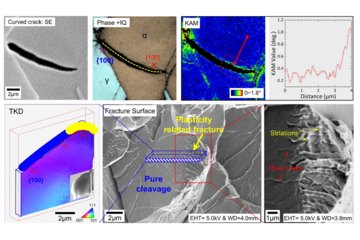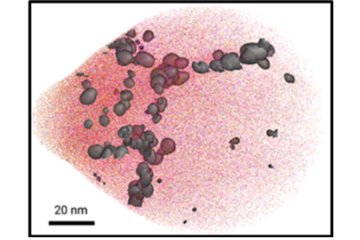All genres
1.
Journal Article
Unravelling the effect of F phase on hydrogen-assisted intergranular cracking in nickel-based Alloy 725: Experimental and DFT study. Corrosion Science 225, 111569 (2023)
2.
Journal Article
Mechanism-controlled thermomechanical treatment of high manganese steels. Materials Science and Engineering A: Structural Materials Properties Microstructure and Processing 828, 142056 (2021)
3.
Journal Article
Evaluation of hydrogen effect on the fatigue crack growth behavior of medium-Mn steels via in-situ hydrogen plasma charging in an environmental scanning electron microscope. Journal of Materials Science & Technology 85, pp. 30 - 43 (2021)
4.
Journal Article
Multiphase-field simulation of austenite reversion in medium-Mn steels. International Journal of Minerals, Metallurgy and Materials 28 (5), pp. 847 - 853 (2021)
5.
Journal Article
Phase boundary segregation-induced strengthening and discontinuous yielding in ultrafine-grained duplex medium-Mn steels. Acta Materialia 200, pp. 389 - 403 (2020)
6.
Journal Article
Macroscopic to nanoscopic in situ investigation on yielding mechanisms in ultrafine grained medium Mn steels: Role of the austenite-ferrite interface. Acta Materialia 178, pp. 10 - 25 (2019)
7.
Talk
Discontinuous yielding in ultrafine-grained duplex medium-Mn steels. Discontinuous yielding in ultrafine-grained duplex medium-Mn steels, Darmstadt, Germany (2023)
8.
Talk
κ carbide microstructures and the role of interfaces in high-Mn lightweight steels. High-Mn Steel 2019, Aachen, Germany (2019)
9.
Teaching
Microstructures, Microscopy and Modelling. Lecture: SS 2024, RWTH Aachen University, 2024-04 - 2024-07
10.
Teaching
Microstructures, Microscopy and Modelling. Lecture: SS 2023, RWTH Aachen University, 2023-04 - 2023-07
11.
Teaching
Microstructures, Microscopy and Modelling. Lecture: SS 2022, RWTH Aachen University, 2022-04 - 2022-07
12.
Teaching
Microstructures, Microscopy and Modelling. Lecture: SS 2021, RWTH Aachen University, 2021-04 - 2021-07
13.
Teaching
Microstructures, Microscopy and Modelling. Lecture: SS 2020, RWTH Aachen University, 2020-04 - 2020-07
14.
Teaching
Microstructures, Microscopy and Modelling. Lecture: SS 2019, RWTH Aachen University, 2019-04 - 2019-07
15.
Teaching
Microstructures, Microscopy & Modelling. Lecture: SS 2018, RWTH Aachen, Aachen, Germany, April 09, 2018 - July 20, 2018
16.
Teaching
Microstructures, Microscopy and Modelling. Lecture: SS 2018, RWTH Aachen University, 2018-04 - 2018-07
17.
Thesis - PhD
Characterization and simulation of bainite transformation in high carbon bearing steel 100Cr6. Dissertation, RWTH Aachen, Aachen, Germany (2014)











